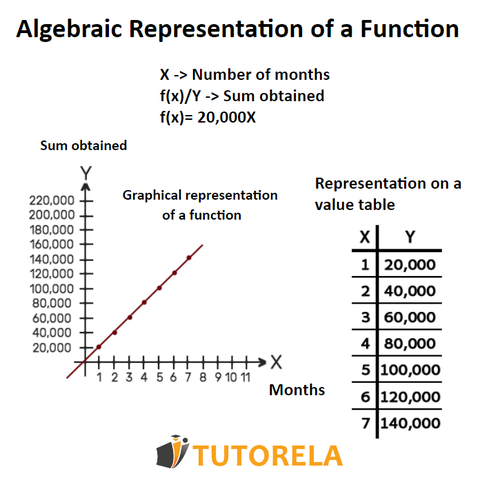A function is a connection between an independent variable and a dependent variable . The relationship between the variables is called a "correspondence rule".
An algebraic representation of a function is actually a description of the relationship between the dependent variable and the independent variable by means of an equation.
The following is the typical structure of a graphical representation:
- ,
For example, if the data is that every month, Daniel earns dollars.
The algebraic representation will be for the number of months for the amount earned.
